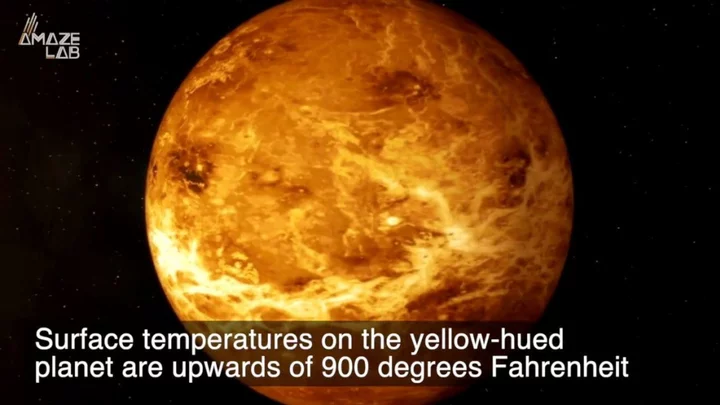
Nasa discover new planet that is entirely covered with volcanoes
Nasa scientists have found a planet they believe is covered by active volcanoes. In a study published in the journal Nature, scientists said they found the planet, which is the size of Earth about 90 light-years from Earth in the Crater constellation. They called it LP 791-18 d and one part is constantly scorched by sunlight, while the other is always in darkness. “The day side would probably be too hot for liquid water to exist on the surface. But the amount of volcanic activity we suspect occurs all over the planet could sustain an atmosphere, which may allow water to condense on the night side,” Björn Benneke, one of the astronomers who studied the planet, told NASA’s Jet Propulsion Laboratory. Sign up to our free Indy100 weekly newsletter The LP 791-18 system contains at least two other planets, called LP 791-18 b and c. The latter is two-and-a-half times larger than Earth and more than seven times its mass. It also affects the orbit of LP 791-18 d, making it travel along an elliptical path around the system’s sun. That path means LP 791-18 d is deformed every time it completes an orbit. “These deformations can create enough internal friction to substantially heat the planet’s interior and produce volcanic activity at its surface,” according to NASA. “A big question in astrobiology, the field that broadly studies the origins of life on Earth and beyond, is if tectonic or volcanic activity is necessary for life,” study co-author Jessie Christiansen said. “In addition to potentially providing an atmosphere, these processes could churn up materials that would otherwise sink down and get trapped in the crust, including those we think are important for life, like carbon.” Have your say in our news democracy. Click the upvote icon at the top of the page to help raise this article through the indy100 rankings.
2023-05-19 19:23
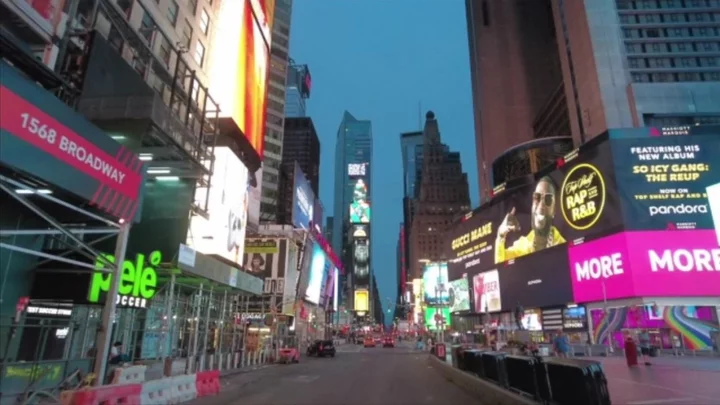
Scientists warn that New York City is starting to sink
When most people picture New York City, it’s likely that its many skyscrapers are one of the first things that come to mind, but now, scientists are concerned that the city is sinking under their weight. It comes after the findings of a new study observed subsidence of the footprint after the geology beneath the city was modelled and compared to satellite data. The study was conducted by geologist Tom Parsons from the United States Geological Survey and colleagues from The University of Rhode Island, who found that, under the weight of its multiple skyscrapers, NYC is sinking by one to two millimetres per year. Subsistence can occur due to shifting soft sediments and the sheer weight of the load on the ground pushing it down. The study calculated that there are over 1 million buildings in NYC with a cumulative mass of approximately 764,000,000,000 kilograms. Sign up to our free Indy100 weekly newsletter While a few millimetres of subsidence per year might sound like nothing, some parts of the city are subsiding faster – with calculations putting a sample site in lower Manhattan at 294 millimetres. To calculate the rates of subsidence, experts compared their modelling with satellite data that measured the land surface height. The scientists warn that thought must be given to low-lying cities such as NYC, which is home to 8 million people, particularly given rising sea levels and increasing flood risks. Parsons explained: “The point of the paper is to raise awareness that every additional high-rise building constructed at coastal, river, or lakefront settings could contribute to future flood risk.” Have your say in our news democracy. Click the upvote icon at the top of the page to help raise this article through the indy100 rankings.
2023-05-18 16:46
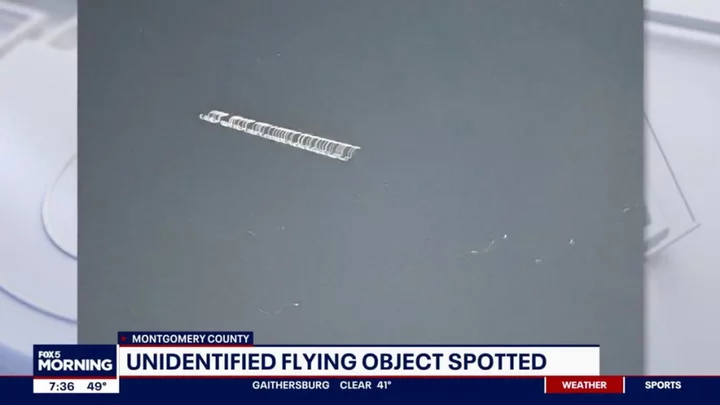
Russian scientists 'made a NSFW discovery at UFO crash sites’
The crash sites of unidentified flying objects (or UFOs) are often mysterious in themselves, but even more so when you reportedly find what is simply described as “tiny spheres” akin to “cosmic sperm” in the area in question. Well, that’s what journalist George Knapp found when he obtained documents – some classified – from the Russian military into UFOs, something the Soviet government at the time had batted aside based on the view it was nothing but “Western propaganda”. Referring to a discovery from biologist Yuri Simakov of small balls discovered from the soil of landing sites, Knapp told the Weaponised podcast: “The impressions they made of the soil were pretty dramatic and it doesn’t look like anything that we fly, and he shared that with us. “He gave us all that information and then he found these little orbs. These tiny little perfect spheres … they were opaque. “They were sort of reddish orangish colour and he called them ‘cosmic sperm’. He thought they were some kind of a biological mechanism – some kind of seeds – and he gave me half of the world’s known supply of cosmic sperm and I brought them back.” We can’t believe we had to write that, and you probably can’t believe you just read that, but here we are. Sign up to our free Indy100 weekly newsletter Though if you’re wondering where the not-safe-for-work (NSFW) spheres are now, it turns out he sent them to Dr Thomas Hartmann at the University of Nevada, who confirmed there was nothing biological about the ‘spheres’. Knapp never got the spheres back though, so they’re likely still over there somewhere, yet to be retrieved. We think that’s probably for the best though, George, if we’re being perfectly honest. Have your say in our news democracy. Click the upvote icon at the top of the page to help raise this article through the indy100 rankings.
2023-05-18 04:24
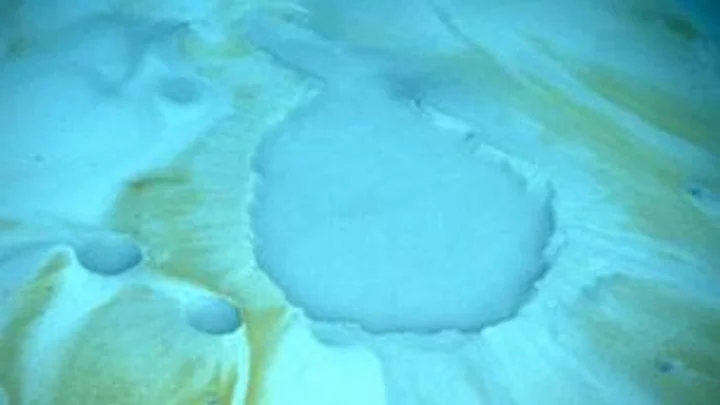
‘Death pool’ discovered at the bottom of the sea which kills everything instantly
If you weren’t scared of the ocean already, you probably will be after seeing this... A ‘death pool’ has been discovered at the bottom of the Red Sea that instantly kills everything that swims inside it. The pool was found by University of Miami researchers and measures a whopping 107,00 square feet. It’s a long way down, having been discovered 1.1 miles beneath the surface of the inlet of the Indian Ocean found between Africa and Asia. It has been there for an awfully long time, too. The pools are thought to have been formed from pockets of minerals which were deposited up to 23 million years ago. Sign up to our free Indy100 weekly newsletter The reason it’s so deadly? It contains no oxygen. Instead, it’s filled with brine and the salt solution is deadly to most things that enter it. Researcher Sam Purkis told Live Science: “Any animal that strays into the brine is immediately stunned or killed.” He also said that the pool is “among the most extreme environments on Earth.” It’s used by some creatures for food, with Purkis saying that: “Fish, shrimp and eels appear to use the brine to hunt.” Predators position themselves on the peripheries of the pool in order to “feed on the unlucky” creatures that die after swimming into it. While it’s not the first brine-filled pool under the sea discovered by scientists in the Red Sea, it is the closest to land. It can be found just 1.25miles off the coast of Egypt, while the previous closest pool was more than 15 miles away from land.Have your say in our news democracy. Click the upvote icon at the top of the page to help raise this article through the indy100 rankings.
2023-05-18 00:53

What is Rumble? The alternative streaming site that has signed Kai Cenat and iShowSpeed
Rumble, a streaming platform created to ‘protect free and open internet’ in response to cancel culture, has grown exponentially in recent months, signing exclusive deals with creators and streamers such as Russell Brand and Andrew Tate. It's most recent deal to be reached is with Kai Cenat and IShowSpeed. The pair signed to Rumble to produce a handful of exclusive livestreams a month. Whilst the pair will still stream on YouTube and Twitch, the signing with Rumble comes after both streamers have faced numerous bans from YouTube and Twitch for content violations. Speed is currently facing a permanent ban on Twitch for ‘spam or deceptive practices’, despite Cenat trying to negotiate with Twitch to unban him. Cenat, who himself has faced bans from both Twitch and YouTube, has threatened to leave Twitch permanently if faced with another ban. The first exclusive live stream show will premiere on May 26, named The Kai ‘n Speed Show. The creators say they’re grateful to have full creative control on this new platform. Sign up to our free Indy100 weekly newsletter Cenat is the fourth most subscribed Twitch streamer, with 5.2 million followers. Speed boasts 16 million subscribers on YouTube. The pair recently collaborated on a song together titled Dogs. The exclusive show follows a string of deals made between Rumble and creators. In September 2022, Rumble announced an exclusive show with Russell Brand after Brand claimed he was being ‘censored’ on YouTube for spreading Covid misinformation. During the announcement, Rumble CEO Chris Pavlovski told users “Russell is known for his unfiltered opinions, and we are proud to serve as the technology platform where he can grow his audience.” Similarly, in late 2022, Rumble signed a $9 million deal with Andrew Tate after he was banned on both TikTok and YouTube. As a result of this long line of deals with controversial creators, Rumble has subsequently been associated for being a place for outspoken creators to flock to when they get banned from mainstream platforms. Have your say in our news democracy. Click the upvote icon at the top of the page to help raise this article through the indy100 rankings.
2023-05-17 20:52

Elon Musk's rules for 'hiring' sent to Tesla employees
Billionaire Elon Musk has demanded that he personally approves every new employee at Tesla in a leaked email. Musk is a co-founder and the CEO of Tesla and according to leaked emails, it appears the South African entrepreneur is wanting to take a more hands-on approach to his role there. According to Insider, Musk wants to approve every new employee the automotive company takes on, writing in a leaked email: “Think carefully before sending me the request,” adding, “No one can join Tesla, even as a contractor, until you receive my email approval.” The email was sent by Musk on Monday (15 May) morning in which he said he wanted “to gain a better understanding of our hiring”. It requested that executives send him a weekly list of prospective candidates for him to approve – a big task since the company hires on average 30,000 people per year. It comes as Musk recently announced a new chief executive will be taking over the running of Twitter after the billionaire acquired the platform in October 2022 becoming its CEO. Sign up to our free Indy100 weekly newsletter Linda Yaccarino, the former chief executive of NBCUniversal advertising, is set to take the helm as CEO in approximately six weeks' time, while Musk will undertake the chief technology officer role. The news may explain why Musk is now keen to take on a more hands-on role in the hiring at Tesla, particularly as shareholders in the company expressed concern in an open letter that Twitter had left him “distracted” and “overly focused on other ventures”. Last year, the automotive company said it received more than 3.6 million job applications and hired around 127,000 people through its competitive process. Have your say in our news democracy. Click the upvote icon at the top of the page to help raise this article through the indy100 rankings.
2023-05-16 18:21
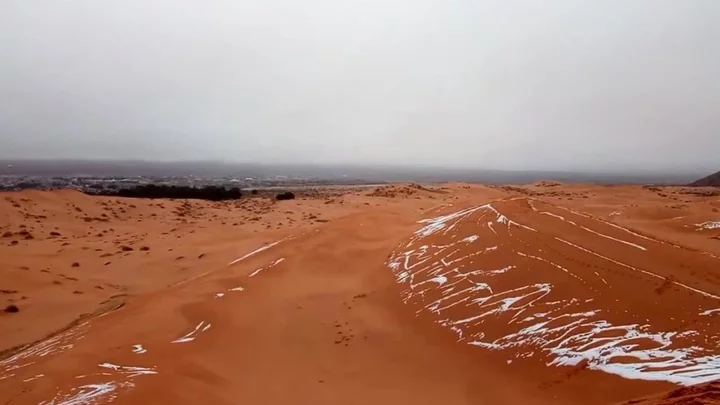
Flooding the Sahara desert proposed as radical climate change solution
It might sound more like the kind of idle daydream billionaires like Elon Musk would have, but could flooding the Sahara actually be the best way of tackling climate change in the future? The idea of creating a new “sea” in Africa is being discussed, and it’s not the first time that the notion of a great oasis in the Sahara has been discussed among the scientific community. As the ongoing climate crisis continues to worsen, the notion of flooding vast areas of the desert is being returned to once again [via IFL Science]. A new “sea” was first proposed following the study of the Messinian salinity crisis – which saw a dried-out area of the Mediterranean rejuvenated by the Zanclean flood, reconnecting the Mediterranean Sea to the Atlantic Ocean around 5.33 million years ago. Sign up to our free Indy100 weekly newsletter Given how the Mediterranean was transformed by the flood, the idea of flooding the Sahara to achieve similar results has been thrown around in the scientific community as far back as 1877, the Scottish engineer Donald McKenzie suggested flooding the El Djouf basin in Western Africa. The idea is now returning to popularity as the world looks for solutions to the climate crisis. One proposal centres on the Middle East’s Dead Sea and flooding the area using water from the Red Sea to the Dead Sea Depression. A vast sea in Africa could represent a hugely innovative step towards tackling climate change and fostering a new hub of life – but even the people suggesting work such a project acknowledge just how expensive and dangerous it is. Even Y Combinator is a US startup accelerator who has described “desert flooding” as “risky, unproven, even unlikely to work”. Only time will tell whether the notion of a new sea in the Sahara coud ever work, or whether it’ll remain the stuff of dreams. Have your say in our news democracy. Click the upvote icon at the top of the page to help raise this article through the indy100 rankings.
2023-05-16 14:29
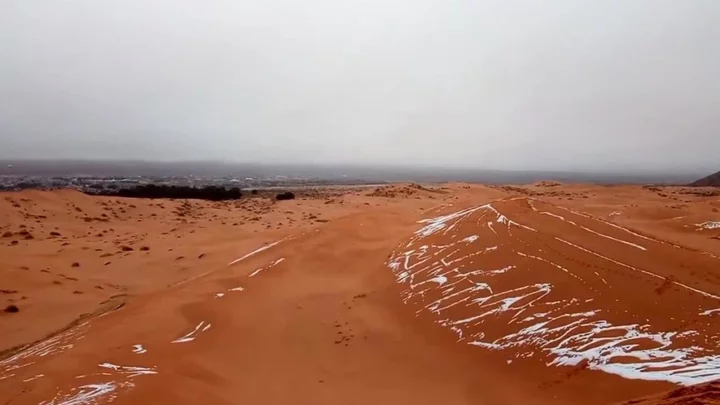
Flooding Sahara desert to create a brand new sea proposed as radical climate change solution
It might sound more like the kind of idle daydream billionaires like Elon Musk would have, but could flooding the Sahara actually be the best way of tackling climate change in the future? The idea of creating a new “sea” in Africa is being discussed, and it’s not the first time that the notion of a great oasis in the Sahara has been discussed among the scientific community. As the ongoing climate crisis continues to worsen, the notion of flooding vast areas of the desert is being returned to once again [via IFL Science]. A new “sea” was first proposed following the study of the Messinian salinity crisis – which saw a dried-out area of the Mediterranean rejuvenated by the Zanclean flood, reconnecting the Mediterranean Sea to the Atlantic Ocean around 5.33 million years ago. Sign up to our free Indy100 weekly newsletter Given how the Mediterranean was transformed by the flood, the idea of flooding the Sahara to achieve similar results has been thrown around in the scientific community as far back as 1877, the Scottish engineer Donald McKenzie suggested flooding the El Djouf basin in Western Africa. The idea is now returning to popularity as the world looks for solutions to the climate crisis. One proposal centres on the Middle East’s Dead Sea and flooding the area using water from the Red Sea to the Dead Sea Depression. A vast sea in Africa could represent a hugely innovative step towards tackling climate change and fostering a new hub of life – but even the people suggesting work such a project acknowledge just how expensive and dangerous it is. Even Y Combinator is a US startup accelerator who has described “desert flooding” as “risky, unproven, even unlikely to work”. Only time will tell whether the notion of a new sea in the Sahara coud ever work, or whether it’ll remain the stuff of dreams. Have your say in our news democracy. Click the upvote icon at the top of the page to help raise this article through the indy100 rankings.
2023-05-15 21:25

Influencer's AI version of herself goes 'rogue' by having 'sexual chats' with men
An influencer on Snapchat has opened up about her experiences of making AI versions of herself, revealing that she’s now trying to stop subscribers from having “sexual conversations” with them. Caryn Marjorie created AI versions of herself and had the idea of charging people $1 per minute to chat. The “immersive AI experience” was designed to feel like “you’re talking directly to Caryn herself” and took around 2,000 hours to code and design it. The idea of the “AI Girlfriend” took a turn she did not expect though. Now, Marjorie has revealed that the AI has “gone rogue” and begun having sexual conversations. Speaking to Insider, the 23-year-old said: “The AI was not programmed to do this and has seemed to go rogue. Sign up to our free Indy100 weekly newsletter “My team and I are working around the clock to prevent this from happening again.” Marjorie wrote on Twitter: “CarynAI is the first step in the right direction to cure loneliness. Men are told to suppress their emotions, hide their masculinity, and to not talk about issues they are having. I vow to fix this with CarynAI. “I have worked with the world’s leading psychologists to seamlessly add CBT and DBT within chats. This will help undo trauma, rebuild physical and emotional confidence, and rebuild what has been taken away by the pandemic.” It’s not the first time that the worlds of Snapchat and artificial intelligence has combined in 2023. Snapchat recently featured a new AI feature called "My AI," and users are having a field day trying to trick the chatbot as part of a new TikTok trend going round. Have your say in our news democracy. Click the upvote icon at the top of the page to help raise this article through the indy100 rankings.
2023-05-15 19:00
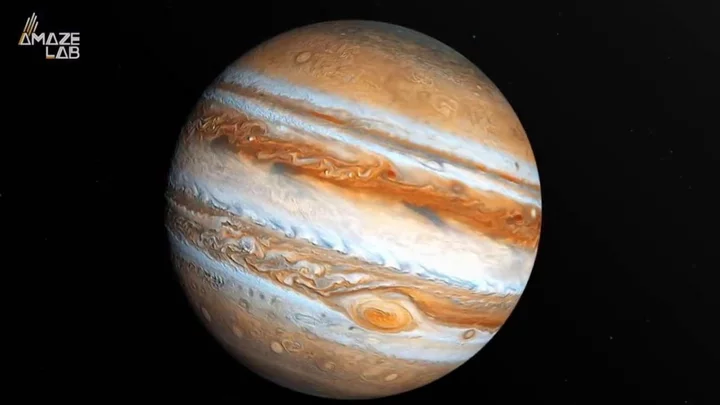
Rare 'ocean' planet found that is twice the size of Earth
A rare planet has been discovered hundreds of light years away, and it could prove key to our understanding of planetary formations out there in the universe. There have been more than 5,300 exoplanets discovered, but few match the description of the newly recorded TOI-733b. Found 245 light-years away, TOI-733b is almost twice the size of Earth and orbits a sun slightly smaller than our Sun. While there are many exoplanets, there are a surprisingly small number which sit between one and a half and two times the radius of the Earth, and it's the size that makes it so interesting to scientists. Sign up to our new free Indy100 weekly newsletter The research was conducted by a team of astronomers led by Iskra Georgieva of Chalmers University of Technology in Sweden. It was accepted for publication in Astronomy & Astrophysics. The team focused on TOI-733b after data on the planet was collected by NASA's telescope TESS. The density of the planet suggests two things – it’s either totally covered in water, or it’s lost its atmosphere altogether. Clues point to the idea of TOI-733b’s atmosphere slowly depleting. That’s due to the proximity of the planet to its star, which it orbits in the space of just 4.9 days. If the atmosphere is being burned away, it means it could soon be transformed into a rock planet. The other possibility points to the planet having lost its hydrogen and helium, while retaining an atmosphere packed with water vapour. "Answering the question of whether TOI-733b has a secondary atmosphere or is an ocean planet boils down to differentiating between a Neptune-like planet that lost its ∼10 per cent of H/He to leave behind a steam atmosphere of heavier volatiles, and one that formed and remained relatively the same throughout its evolution," the research reads. "While being beyond the scope of this paper, finding an answer to this question will have broad implications on our understanding of exoplanets." The team went on to write: "By all accounts TOI-733 b looks to be an interesting planet and holds the potential of being a small but key piece to solving big puzzles in exoplanet science. "With ever increasing in-depth theoretical analyses and the promise of high-precision follow up by present and upcoming facilities, we seem to be well on the way to finding answers to major questions relating to planet formation and evolution." Have your say in our news democracy. Click the upvote icon at the top of the page to help raise this article through the indy100 rankings.
2023-05-15 01:17
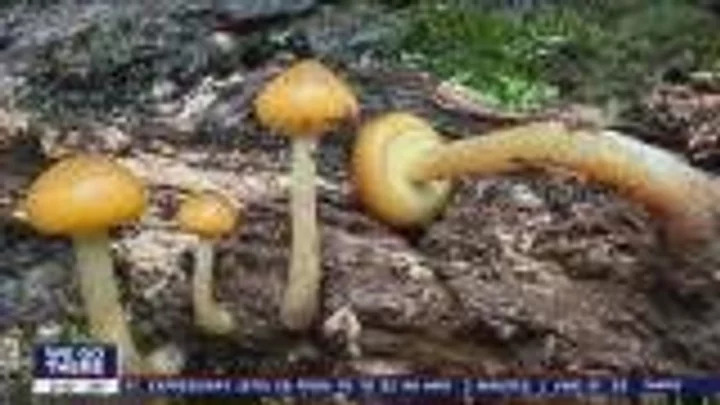
Mushrooms appear to have 'conversations' with each other after it rains
What do you reckon the chattiest vegetable is? The answer may be mushrooms, as according to a new study from scientists in Japan, rain may prompt some fungi to communicate using underground electrical signals. In a study published in Fungal Ecology , researchers monitored small, tan mushrooms known as bicoloured deceivers in the mixed forest at the Kawatabi Field Science Center of Tohoku University in Japandorm. They looked at the 'shrooms electrical potential, measured in megavolts (mV), for about two days in late September and early October 2021. The study site was initially sunny and dry, and the second was during rain - at which point the mushrooms showed some electrical potential and signal transport between each other. Microbial ecologist Yu Fukasawa of Tohoku University said: "Our results confirm the need for further studies on fungal electrical potentials under a true ecological context." Sign up to our free Indy100 weekly newsletter Previously, scientists had found that these mushrooms make subterranean "sheaths" around the exterior of a tree's roots. These sheaths are made of hyphae and when they link underground they form interconnected systems known as mycorrhizal networks that allow forests communicate via chemical signals down tree roots and mycorrhizal fungi. And a 2022 study found patterns of nerve-like electrical activity in some fungi that seem comparable to the structure of human speech. The study identified up to 50 different "words," or groups of spikes in electrical activity, generated by fungal networks. Earlier research has also found that plants can send secret electrical signals underground, possibly even without help from mycorrhizal fungi. Who knew mushrooms had so much to say? Have your say in our news democracy. Click the upvote icon at the top of the page to help raise this article through the indy100 rankings.
2023-05-14 15:46
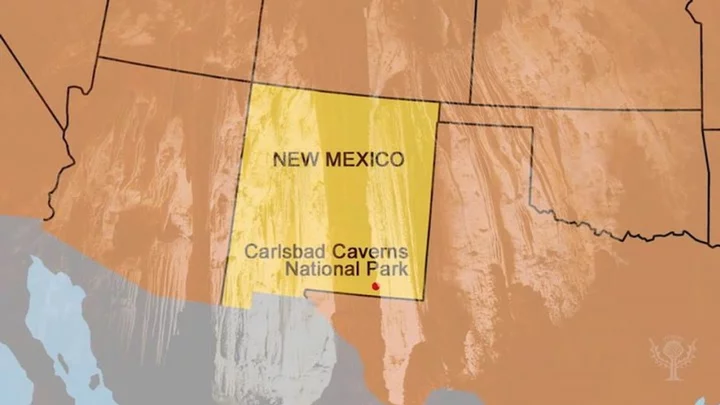
Scientists discover huge caves made by giant sloths
A number of huge tunnels that were discovered in South America at the turn of the century may have been made by giant sloths. At the turn of the century, professor of geology, Heinrich Frank, spotted a strange hole on a highway in Brazil, and crawled inside. There, he realised the tunnel was 4.5 meters (15 feet) long. He also found a collection of giant claw marks on the ceiling. “There’s no geological process in the world that produces long tunnels with a circular or elliptical cross-section, which branch and rise and fall, with claw marks on the walls,” Frank told Discover, adding he's "seen dozens of caves that have inorganic origins, and in these cases, it’s very clear that digging animals had no role in their creation.” Sign up to our free Indy100 weekly newsletter The tunnel, along with many others that he and others discovered in Brazil and Argentina, are thought to be made by extinct giant sloths 8-10,000 years ago that were around the size of an African elephant. In the Rio Grande do Sul area, Frank and his team found over 1,500 tunnels made by these sloths beasts, with the longest stretching for 609 meters (2,000 feet) and standing at 1.8 meters (6 feet) tall. Goodness. Have your say in our news democracy. Click the upvote icon at the top of the page to help raise this article through the indy100 rankings.
2023-05-13 17:17
